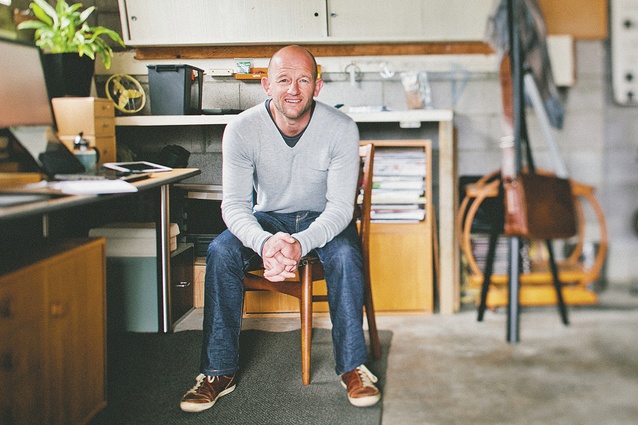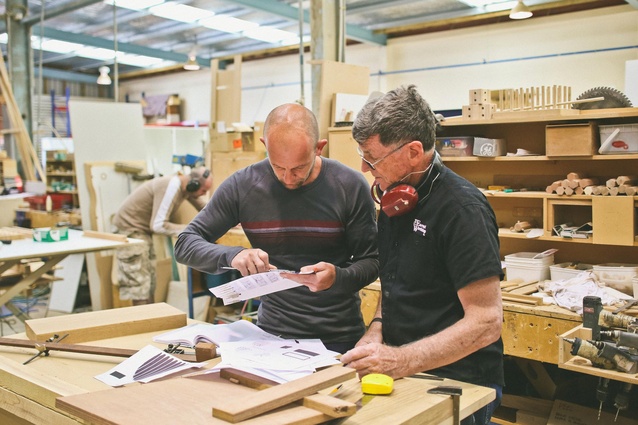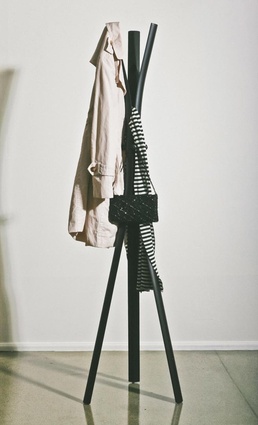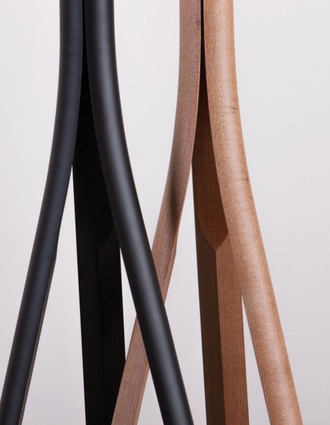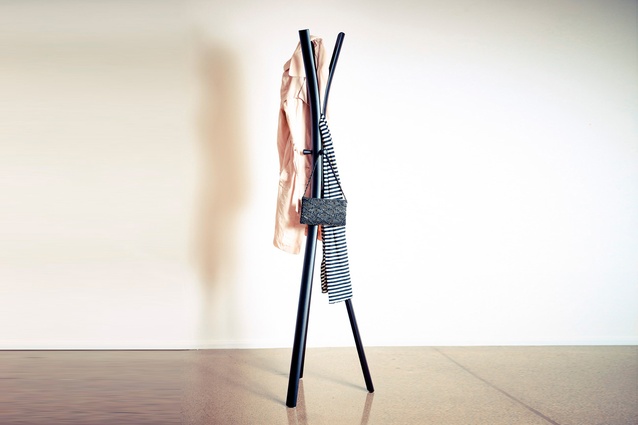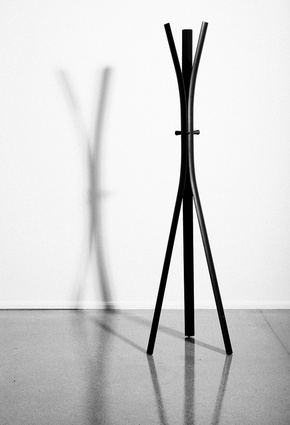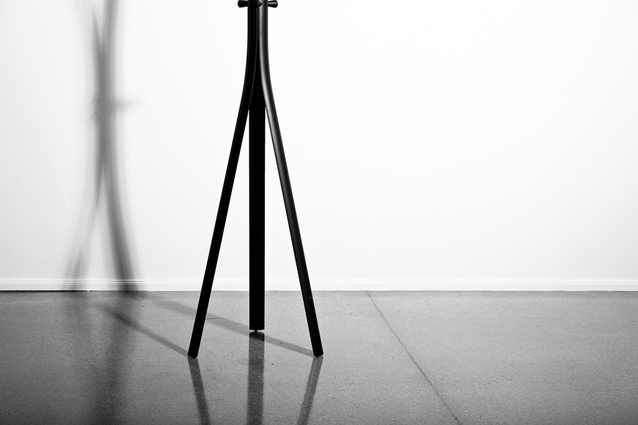Making a stand
So what if he’s currently working out of his garage? Every designer has to start somewhere – and furniture maker Dan Gillingham is doing so from his home in Mount Maunganui. The 41-year-old, who majored in product development while studying Technology at Massey University, has taken the experience learnt at design companies around the country and started his own sustainable furniture business called The Earnest Workshop.
Urbis: How did you get started in furniture design?
Dan Gillingham: I started off at a design consultancy firm called DotZero, which was an initiative that came out of Massey University. The consultants were made up of Massey staff, me and one other graduating student. We advised small businesses on product development and took their design ideas and made them feasible. Then I worked for two furniture companies in Wellington. For one of them, AE Tilley, I was asked to build up a range of furniture and it was such a great opportunity as a graduate designer. After an OE, I spent eight years at Design Mobel, designing bedroom furniture for the company.
U: What inspired you to start out on your own?
DG: I’d been thinking about it for a while and last August I felt the time was right. While working at Design Mobel, I was very fortunate to have worked with Dave MacFarlane, the firm’s founder, so I got to see firsthand what sustainability is all about. It comes from having a real conscience for the environment. I think most designers ask themselves, “Do we need more stuff?” I think we definitely don’t, but I think consumers need better, more sustainable, choices. I wanted to create something that really stood for that.
U: So you started The Earnest Workshop. Is there any special meaning behind the name?
DG: A friend of mine came up with the name and I knew as soon as I heard it that it was perfect. The word earnest has a traditional feel to it, which is reflected in the values that I’m trying to promote.
U: Do you have a set of design beliefs that you bring into your pieces?
DG: I’m pretty passionate about sustainability and what frustrates me is how wasteful we have become as consumers. We’ve almost been conditioned to think that it’s okay to buy something with no real intention of keeping it for long, but that way of thinking isn’t our fault. It’s because things aren’t made to last long and corners are often cut in mass-manufacturing. Everything that comes out of The Earnest Workshop has been designed and crafted in a way that it will last for a long time. I want people to buy something because they’ve fallen in love with it and are going to cherish and look after it.
U: Where did the idea for your first product, the Peel coat stand, come from?
DG: I wanted to work on a furniture piece with a traditional feel to it. I like what a coat rack stands for: having it in the entrance way to a home, and the gesture of hanging a friend’s coat on it for them, makes it a welcoming furniture piece to own. The exercise of designing Peel centred on the idea of taking a single piece of wood, dividing it, manipulating it in some way and then reassembling it. Because it’s designed in this way, it uses minimal material. Peel is made entirely from natural timber – there are no metal fixings used in its assembly. So far I’ve made 30.
U: Where does your inspiration come from?
DG: It’s hard to tie it down to one thing. I think it’s important to be exposed to lots of things and most of my ideas come out of the blue, like when I’m sleeping at night. I think it’s important to focus on a particular need and to be original.
U: What other pieces are you working on at the moment?
DG: Some domestic furniture (a continuation of some of the ideas that came out of the Peel coat stand), including a hallway table and an entrance-way seat. Some lighting and a commercial seating range too. theew.co.nz

